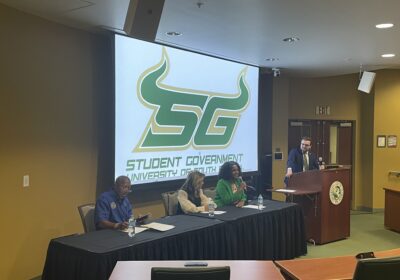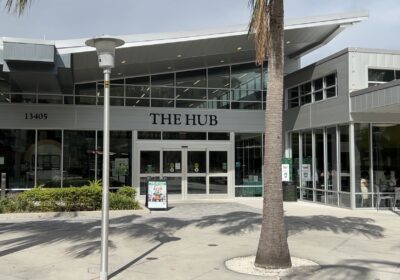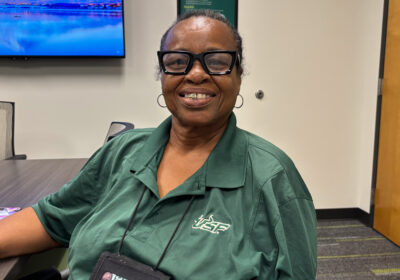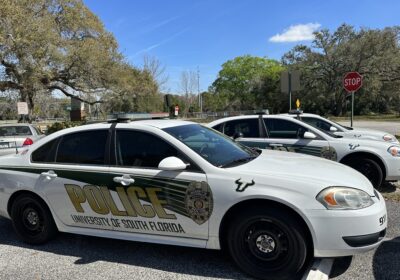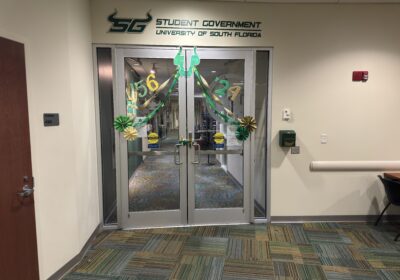High-traffic facilities adhere to strict protocols for student access, cleaning
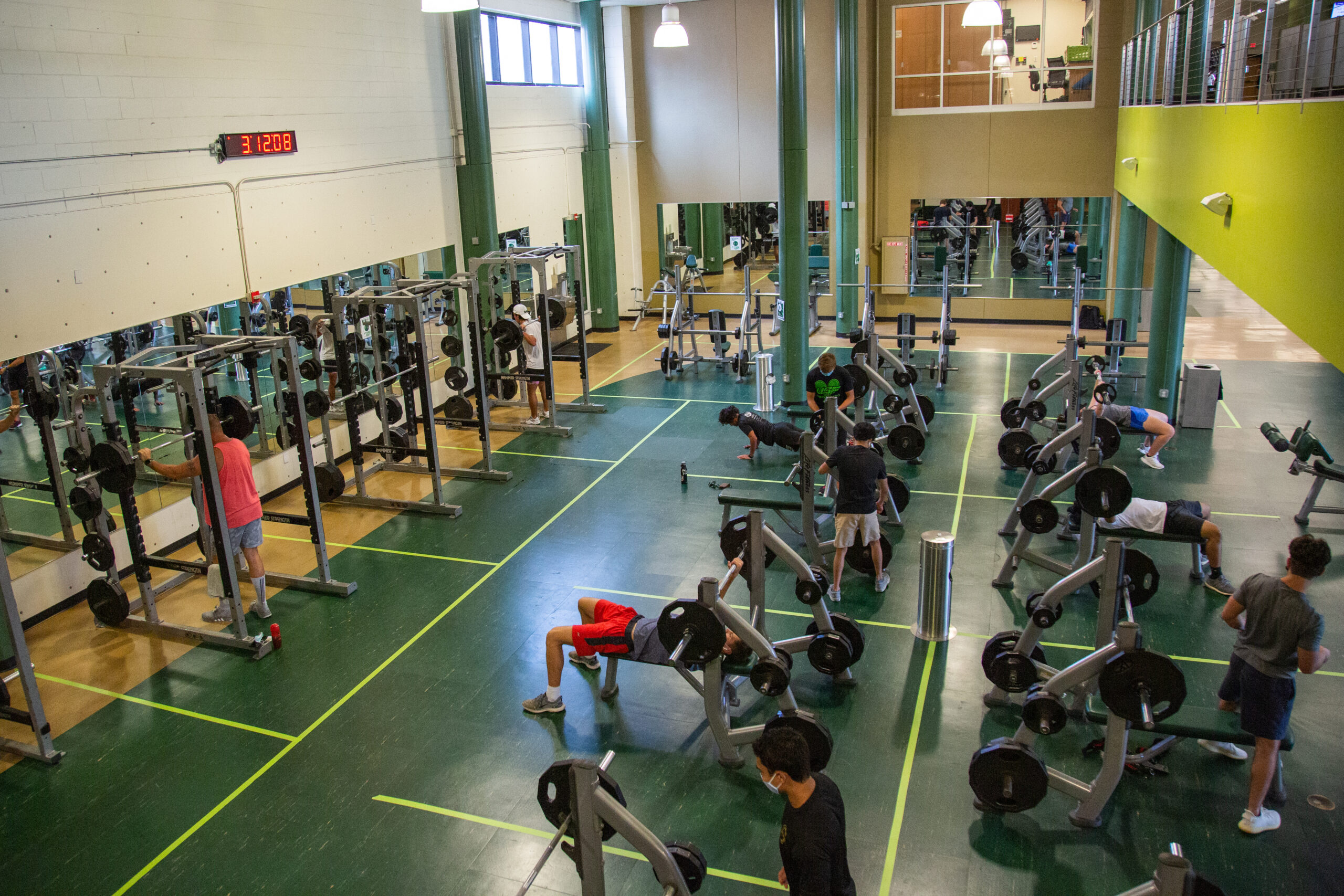
As the fall semester begins, students coming to campus will notice that a lot has changed in the last five months as a result of COVID-19.
Now, the USF community will have to adapt to a new reality consisting of stricter protocols, cleaning procedures and social distancing requirements when visiting some facilities around campus.
USF Library
The library is among many facilities across campus that has undergone significant changes in its operations, including the implementation of a reservation system for students interested in a quiet place to study.
Under the library’s reservation system, students will have to reserve a seat in their desired area prior to their arrival. Each reservation will be up to three hours and if a student wishes to extend it, they can reserve multiple seats in a day through the USF Library website.
Once students reserve a seat, a confirmation email containing details about the reservation, including the selected time, seat number and floor, will be sent to their emails. A reservation confirmation email must be presented at the concierge desk to enter the library.
All seats will have QR codes for identification, which will be used to check in and out of their seats. If a student doesn’t check out, the reservation will remain active until its expiration.
Once inside the library, the use of face coverings will be required at all times, according to Dean of USF Libraries Todd Chavez. There will be hand sanitizer stations on every floor and social distancing will be strictly enforced, which means no group gatherings will be allowed.
As a way for students to maintain physical distance inside the library, Chavez said each floor’s spaces have been reconfigured and some furniture has been removed to reduce the total seating capacity. Under normal circumstances, the library has a total of 2,200 seats available, however, only 34 percent, or 780 seats, of its total capacity will be available in the fall.
In addition, barricade tape has been placed on furniture to prevent agglomeration as well as to respect social distancing guidelines.
“Under normal circumstances, the lobby would be full and we’d have people all over Starbucks, we’d have people all through the first, second and fifth floors, standing next to each other in some cases talking to one another,” Chavez said. “All of that was part of our normal life in the library and we can’t do that anymore.”
Even riding the elevator will be subject to strict regulations, as only two people will be allowed on at a time.
An additional custodial crew of between 10 and 15 people will be in charge of regularly cleaning high-touch areas, including desktop countertops, elevator buttons, doorknobs, tables and printers.
As a result of COVID-19, pulling an all-nighter to study for a test or finish a project in the library will not be possible in the near future as the library significantly reduced its hours of operations for the fall semester.
The library will be open Monday through Thursday from 8 a.m. until 6 p.m., Fridays from 8 a.m. until 5 p.m. and Sundays from 1 p.m. until 9 p.m. On Saturdays, the library will be closed for a “top to bottom, high-intensity cleaning,” according to Chavez.
In addition to deep cleaning on Saturdays, Chavez said the custodial team will be sanitizing the facility every night after its closure as well as every time a shift is over.
The hours could be expanded further based on the demand and the students’ response, according to Chavez. However, he said the library won’t be opening 24 hours, five days a week until USF reaches phase IV of its reopening plans when a vaccine is launched.
For those looking to recharge their energies with some caffeine from the Starbucks located on the first floor, their plans will need to be postponed.
Starbucks will be closed temporarily for remodeling to add an additional entry as a way to control traffic flow as well as facilitate entering the coffee shop. The Starbucks is set to reopen in October, according to Chavez.
Besides reducing hours, the USF Library will also be controlling entry into the facility, according to Chavez.
Access to the library will be restricted to currently enrolled students, faculty or staff with a valid USF ID. Those without a valid USF ID won’t be allowed to enter or remain in the library.
With the library open, some of its student services will also return with adjustments.
Students taking math-related classes this semester will have a different experience regarding the Smart Lab, especially when it comes to testing and tutoring.
While the Smart Lab will remain open for tutoring as well as computer access, it won’t be administering testing during the fall semester. Chavez said that part of the Smart Lab will be reserved for students taking math-related courses and the rest will be available for any student to access the computers.
As a way to mitigate the risks of spreading the virus through one-on-one interaction, all tutoring and learning groups will be done virtually through Microsoft Teams. In addition, the Writing Studio will also be offering its services virtually by appointment starting Aug. 31.
Textbook rental will still be available to students during the fall semester, but with a twist.
Each book that’s been checked out will be sanitized upon return, according to Chavez. After it’s sanitized with an alcohol-based spray, each material will be set aside for about an hour for a “quarantine” period, leading to delays and longer wait times for students interested in reserving textbooks, according to Chavez.
Although the library will look significantly different as a result of COVID-19, Chavez said all preventive measures as well as new cleaning protocols will be essential to ensuring a safe and healthy campus environment.
“It’s going to take more planning for students in order to keep the university open and available to the students, and not end up back in a remote learning environment,” Chavez said. “In order to do that, everything’s going to kind of slow down a little bit. And we’re going to have to plan more in order to be sure that everything gets taken care of.
Marshall Student Center
As the central point of campus, the Marshall Student Center (MSC) is used to receiving thousands of visitors daily, either from being a walkway to class, a stop for a bite or the designated place for on-campus events and meetings.
In light of COVID-19, the MSC made significant changes in its operations, protocols and usage of space to meet guidelines imposed by the university as well as the Centers for Disease Control and Prevention (CDC).
“We are still going to be the center of campus, we’re just going to operate in a different form and function because we have larger spaces that can assist students to be able to have face-to-face interactions in a classroom,” MSC Director Matt Marshall said.
“Where those things would normally take place in other places, now they can take place within our building, and we can help out the university and help out the student body by performing that function.”
Under reduced hours, the MSC will be open Monday through Friday from 7 a.m. until 9 p.m., Saturday from 8 a.m. until 9 p.m. and Sundays from 10 a.m. until 8 p.m. Marshall said the hours will adjust as demand necessitates.
As a way to promote the health and safety of the campus community, no in-person events, tabling, programs or meetings will be allowed for the fall semester. Per university rule, all student organization events, programs and meetings should be hosted virtually.
Instead of letting the dust accumulate in rooms originally meant to host meetings and events throughout the semester, the MSC decided to put them to better use by turning them into classrooms, study rooms and student lounges.
Throughout the week, the university will be hosting several classrooms across different conference rooms in the MSC, including the Ballroom and Oval Theater. To meet social distancing guidelines, the rooms have been restructured and the seats rearranged.
Under CDC guidelines, Ballroom A and B will have a capacity for 92 people. If the entire Ballroom was used, the maximum capacity would be over 1,000 people.
In contrast, the Oval Theater’s total capacity is 703. After rearranging seats, the maximum capacity went down to 96 people.
Besides classrooms, the MSC will have 40 study rooms available free of charge for students looking for a quiet place to study by reservation. Depending on the room’s size, it can fit multiple seats, 6 feet apart from each other, in each study room.
Students can check each room’s availability through the MSC’s website. To make a reservation, they will need to send an email one day in advance to the MSC staff requesting a specific time frame and room number.
Reservations will be available for two-hour time slots. Depending on the demand, additional study rooms could be added, according to Marshall.
“If we realize that those spaces are filling up quickly and students are utilizing those, then we will switch over some of our other spaces to additional study spaces as well,” Marshall said.
A confirmation email will be sent regarding the reservation. Students will check in at the information desk on the first floor and receive a wristband for identification.
Students will also have designated lounges on a first-come, first-serve basis within the facility with seating options available, including the food court, Panera Bread and the Skypad lounge.
Marshall said that all areas in the MSC will be sanitized after each use. After the building shuts down at the end of the day, the custodial crew will use disinfectant foggers to sanitize the entire facility.
Recreation and Wellness
After nearly five months closed, gyms across campus will finally make their comeback and welcome members with the start of the fall semester.
Students, faculty and staff will need to make a reservation to access any on-campus gym, including the Rec Center and the FIT. They will be able to make one-hour-and-15-minute reservations 25 hours ahead of time through the Recreation and Wellness website.
After each time slot, all gyms will be closed for a 15-minute sanitation period, where the custodial crew will be cleaning the facilities, including high-touch areas like door knobs and equipment, for the next round of reservations, according Recreation and Wellness Director Jay Souza. During each time slot, the Rec Center will have a maximum capacity of 75 people, compared to 35 people in the FIT.
To manage the flow of traffic, members will need to check in and enter through the east gym lobby located across from Champion’s Choice.
Face masks will be required upon entering and exiting the facility as well as when walking around. The use of face coverings will not be enforced when exercising, according to Souza.
During phase II of USF’s reopening plan, only the Rec Center and the FIT will be open. The WELL, located near USF Health off Bruce B Downs Boulevard, will remain closed for the fall semester.
In addition, the USF Riverfront Park will be open from noon until 5 p.m. every day for outdoor activities. The boat house will be open Friday through Sunday for kayak rentals.
When it comes to fitness classes, Souza said they are still creating the schedules and evaluating which classes can be performed while meeting social distancing guidelines. If classes are allowed, then it will have a capacity of under 10 people per class, according to Souza.
Some intramurals that don’t require physical contact will be allowed, including softball, cornhole and kickball. More updates will be announced in the coming weeks as Recreation and Wellness receives approval from the USF COVID-19 Task Force, according to Souza.
“We just can’t do physical contact type sports,” Souza said. “We have to keep the numbers low, so there’s no basketball, flag football or soccer.”
As a result of financial constraints placed by COVID-19, events and certain programs hosted by Recreation and Wellness will be put on hold, according to Souza.
Since its closure in March, Recreation and Wellness lost about 75 percent of its membership revenue. Without considering its Activity and Service Fees allocation, Recreation and Wellness usually generates between $180,000 and $300,000 per year in memberships.
Despite the challenges, Souza remains optimistic to get back to business and welcome back members for the new semester ahead.
“I think that everything’s going to come back to normal, in fact, I think when this is all done, we’ll probably come back stronger than ever. If not, we’ll have more participation throughout everything because students are really desiring that connection with other students.”
While different facilities across campus have implemented new protocols and regulations to mitigate the spread of COVID-19, Chavez said successful mitigation will also rely on everyone’s personal responsibility to comply with the new protocols.
“Big universities with good, strong health plans have had to close again because of outbreaks on their campuses. We don’t want to be in that list,” Chavez said. “We want to be able to open and make this work and keep everybody from getting sick.”

